Cutting Downtime in Turkey: How Pallet Changing Machines Help
Are you constantly battling production delays in your Turkish facility? You see a pallet of finished goods, ready to ship, but it's sitting on an in-house wooden pallet. It needs to be on a plastic export pallet. The process of manually transferring the entire load, box by box, is slow, risky, and a major source of downtime. I have seen this problem countless times. This delay eats into your profits, frustrates your team, and can even damage your relationship with customers waiting for their delivery. You know there has to be a better way to handle this simple, yet critical, step in your logistics chain.
Pallet changing machines help cut downtime in Turkey by automating the process of transferring goods from one pallet to another. Instead of a slow, manual process that can take over 30 minutes and risks product damage or worker injury, a pallet changer can safely swap a full load in under 60 seconds. This drastic time reduction eliminates a major bottleneck in shipping and receiving, allowing Turkish factories to increase throughput, reduce labor costs, and meet tight delivery schedules.
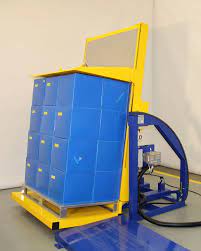
I understand the pressure to keep the production line moving. As an engineer who built my own factory, every minute of stopped work felt like money burning. The transition from production to shipping should be smooth, not a stumbling block. This is why addressing the pallet swapping issue is so important. It's not just about one pallet; it's about the entire flow of your operation. Let's explore exactly how this equipment solves these challenges and what it can mean for a business owner focused on efficiency and growth.
What Is a Pallet Changing Machine and Why Is It Crucial for Turkish Factories?
Does the sight of a damaged pallet bring your entire shipping department to a halt? You have a full load of product, perfectly stacked and wrapped, but the pallet underneath is cracked or broken. Now, your team must carefully unstack everything, replace the pallet, and restack it all. This process is not just slow; it’s a recipe for product damage and potential injuries. This is a common but expensive problem, especially in fast-paced manufacturing environments like those found across Turkey.
A pallet changing machine, also known as a pallet inverter or pallet exchanger, is a piece of equipment that safely grips and rotates a fully loaded pallet, allowing the original pallet to be quickly and easily replaced. It is crucial for Turkish factories because it directly solves the problem of needing to switch between internal wooden pallets and external plastic or sanitized pallets for export, food, or pharmaceutical industries. This automation minimizes handling, reduces product damage, and dramatically speeds up the logistics process, which is vital for competing in the global market.
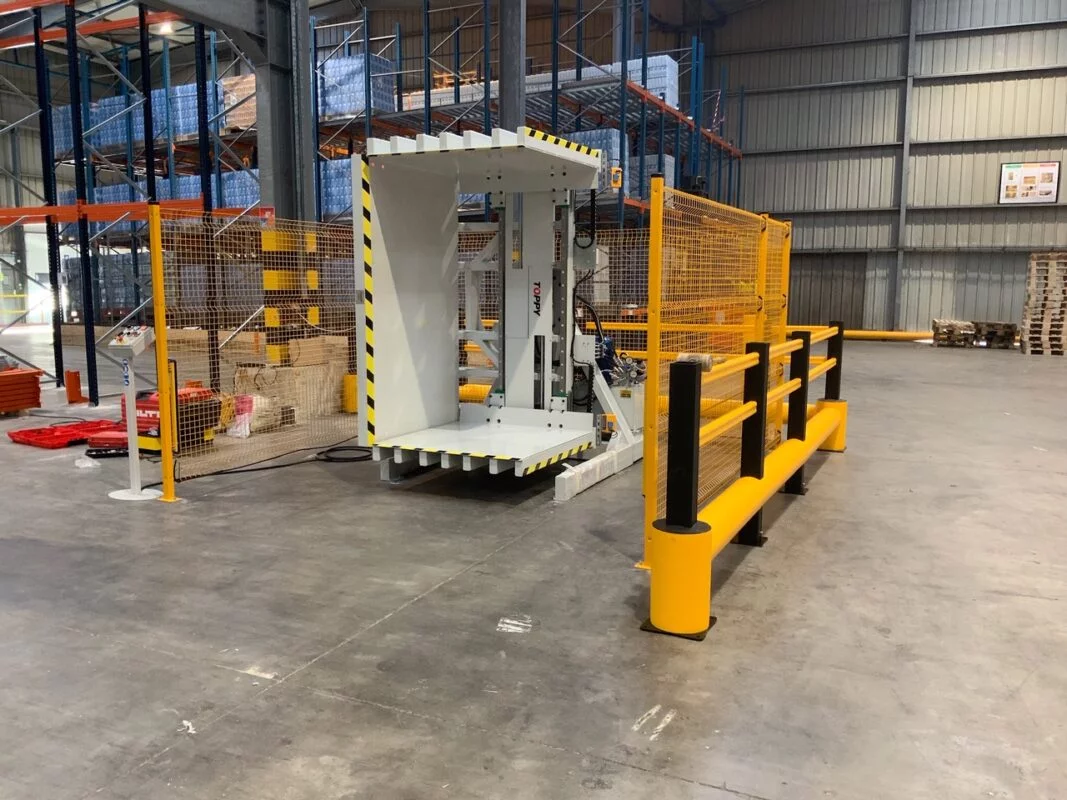
A Deeper Look at Pallet Changers
Let's break this down further. Turkey has a robust and growing industrial sector, from automotive parts and textiles to food and beverage. This growth puts immense pressure on logistics and supply chain efficiency. When you need to ship products to Europe or other international markets, you often can't use your standard warehouse pallets. You might need Euro-pallets, plastic pallets, or CHEP pallets. Or, a customer might send back your expensive shipping pallets, and you need to transfer the goods onto your own cheaper pallets for storage. This is where the bottleneck happens.
A pallet changing machine mechanizes this entire process. There are a few main types:
- Pallet Inverters: These are the most common. The machine clamps the load, rotates it 180 degrees, and allows the old pallet to be removed from the top. A new pallet is placed on the load, and the machine rotates it back. It's simple and effective for stable, boxed goods.
- Pallet Exchangers (Push-Pull Type): These machines push the entire load from the old pallet onto a new pallet waiting right next to it. This is great for loads that might not handle being inverted, like pails of liquid or fragile items.
- Combination Systems: Some advanced systems can either invert or push, giving you flexibility for different product types.
The core benefit is removing the uncertainty and inefficiency of manual labor from a critical process. Look at this comparison:
| Feature | Manual Pallet Swapping | Using a Pallet Changing Machine |
|---|---|---|
| Time per Pallet | 20-40 minutes | 1-2 minutes |
| Labor Required | 2-3 workers | 1 operator |
| Risk of Product Damage | High (dropping, shifting) | Very Low |
| Risk of Worker Injury | High (back strain, repetitive motion) | Minimal |
| Consistency | Low (depends on workers) | High (repeatable process) |
For a Turkish factory owner looking to increase export capacity or simply make their warehouse more efficient, the pallet changer is not a luxury. It's a fundamental tool for modern logistics. It ensures that the speed you achieve in production isn't lost in the final steps before shipping. It’s about maintaining momentum.
How Do Pallet Changers Directly Reduce Labor Costs and Manual Handling Risks?
Are you looking at your labor budget and wondering where you can find savings without cutting your team? You see your most experienced workers spending their valuable time on low-skill, high-risk tasks like manually restacking pallets. It’s not a good use of their talent, and every time they bend over to lift a heavy box, you worry about the potential for a back injury, which could lead to lost time and high compensation costs. This is a hidden cost that drains resources from every warehouse.
Pallet changers directly reduce labor costs by transforming a multi-person task into a one-person operation. This frees up at least one or two workers per shift to focus on more value-added activities. They also slash manual handling risks by eliminating the repetitive lifting, bending, and twisting that cause a majority of warehouse-related musculoskeletal injuries. This leads to fewer accidents, lower insurance premiums, and a safer, more stable workforce.
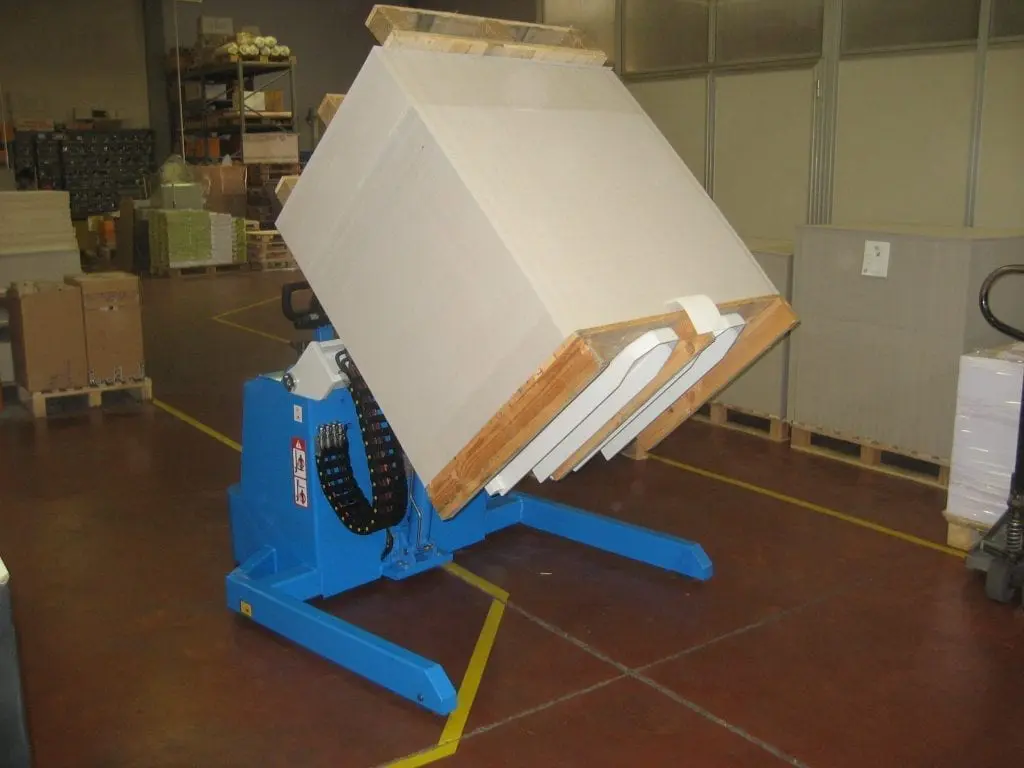
Breaking Down the Savings and Safety Improvements
As a factory owner, I am always focused on the numbers. The ROI of any equipment has to be clear. When we talk about labor savings from a pallet changer, it's not just about one person's salary. It's a cascade of financial benefits. Let's quantify this.
Imagine a scenario in a busy Turkish distribution center. To manually swap a pallet, you need two workers. It takes them, on average, 30 minutes. If they swap 10 pallets in a day, that’s 300 minutes, or 5 hours of combined labor time, spent just on this one task. With a pallet changer, one operator can swap those same 10 pallets in about 15 minutes total. The time savings are enormous, but the real value is in redeploying that labor. Those workers can now be picking orders, loading trucks, or performing quality control—tasks that directly contribute to revenue.
Now, let's talk about risk, which is the other side of the cost coin. Manual handling is consistently a leading cause of workplace injuries.
The True Cost of a Workplace Injury
- Direct Costs: These are easy to see. They include workers' compensation payments, medical expenses, and any legal fees. In Turkey, like in many countries, these costs can be substantial.
- Indirect Costs: These are the hidden costs that really hurt a business. They include:
- Lost Productivity: The time spent replacing the injured worker and training a new one.
- Administrative Time: The time your supervisors and HR staff spend on accident reports and claims.
- Lower Morale: Accidents can create a climate of fear and lower the morale of the entire team, which can impact overall productivity.
- Equipment/Product Damage: The accident itself might have involved dropping and destroying product.
Here is a simple risk assessment comparison:
| Risk Factor | Manual Pallet Swapping | Using a Pallet Changing Machine |
|---|---|---|
| Lifting Heavy Loads | Constant; High risk of back injury | Eliminated |
| Repetitive Bending | Constant; High risk of strain | Eliminated |
| Awkward Postures | Frequent; High risk of musculoskeletal disorders | Eliminated |
| Contact with Unstable Load | Possible; Risk of falling objects | Contained within the machine |
By investing in a pallet changer, you are not just buying a machine. You are investing in a safer work environment. This builds trust with your employees and shows that you value their well-being. A safer factory is a more productive and profitable factory. I’ve seen it time and again.
Can Integrating Pallet Changers Improve Overall Warehouse Efficiency in Turkey?
Does your warehouse feel chaotic? Do bottlenecks appear in unexpected places, like the receiving dock or the shipping bay? You might have fast forklifts and an organized racking system, but if the flow of goods gets stuck at key transition points, the whole system slows down. A single pallet waiting for a quality check or a pallet swap can cause a traffic jam that echoes through your entire operation, delaying shipments and frustrating your staff.
Yes, integrating a pallet changer can dramatically improve overall warehouse efficiency in Turkey by creating a smooth, predictable, and fast-flowing process at critical inbound and outbound points. It acts as a bridge between different parts of your supply chain—like production, warehousing, and shipping—by standardizing pallet types quickly. This eliminates slowdowns, reduces forklift travel time, and allows for better integration with Warehouse Management Systems (WMS), leading to higher throughput and a more streamlined operation.
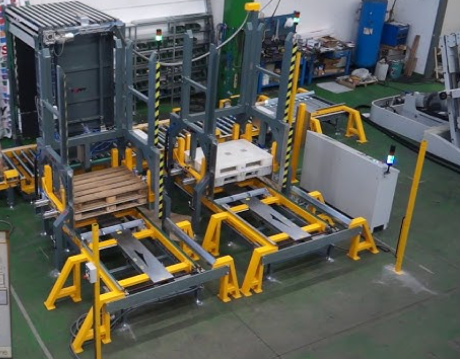
From a Single Task to a System-Wide Upgrade
Thinking about a pallet changer as just a machine that swaps pallets is too narrow. A business leader like Javier Morales would see it as a strategic tool for process optimization. To understand its full impact, we need to look at the entire warehouse workflow.
Let's consider two key areas: receiving and shipping.
Optimizing the Inbound Flow
When a truck arrives with raw materials or goods from a supplier, they often come on non-standard or low-quality pallets. You don't want these pallets entering your automated storage and retrieval system (AS/RS) or even your standard racking, as they can cause jams or safety issues.
Traditional Process:
- Forklift unloads pallet from truck.
- Forklift moves pallet to a staging area.
- Workers manually unstack goods onto a clean, in-house pallet.
- Forklift takes the new pallet into the warehouse.
This process is slow, requires a lot of floor space, and involves multiple forklift movements and manual handling.
Process with a Pallet Changer:
- Forklift unloads pallet from truck.
- Forklift takes the pallet directly to the pallet changer located at the receiving dock.
- The operator swaps the load onto a high-quality, standardized warehouse pallet in under two minutes.
- Forklift takes the new pallet directly into the warehouse system.
This is fast, requires minimal space, and reduces handling by 50% or more.
This efficiency gain at the very start of the process prevents delays from backing up into the yard and keeps your production lines supplied without interruption.
Streamlining the Outbound Flow
The outbound process sees similar, if not greater, benefits, especially for Turkish exporters.
| Step in Shipping Process | Without Pallet Changer | With Pallet Changer |
|---|---|---|
| 1. Order Picking | Picked goods are placed on an internal pallet. | Picked goods are placed on an internal pallet. |
| 2. Staging for Shipping | Pallet moved to a large staging area for manual restacking. | Pallet moved directly to the pallet changer. |
| 3. Pallet Swapping | 2-3 workers manually transfer boxes to an export pallet (e.g., plastic or Euro-pallet). This takes 20-40 mins. | 1 operator swaps the load in <2 mins. |
| 4. Loading | The new pallet is wrapped and moved to the truck. Delays here can make a truck miss its departure slot. | The new pallet is immediately ready for wrapping and loading. |
By integrating a pallet changer, you create a "just-in-time" pallet swapping capability. This means you can reduce the amount of space needed for staging and ensure that trucks are loaded faster. For a company focused on hitting 95% equipment uptime, eliminating these kinds of logistical hurdles is not optional—it's essential. It smooths out the entire process, making your warehouse less of a cost center and more of a competitive advantage.
What Are the Key ROI Factors to Consider When Investing in a Pallet Changer?
As a practical business owner, you're not going to invest in new equipment based on promises alone. You need to see a clear path to a return on your investment (ROI). You'll ask tough questions: How long will it take for this machine to pay for itself? What are all the costs involved, and what are all the real, measurable savings? An investment must directly support your primary goals, like reducing operational costs by 8% or boosting efficiency.
The key ROI factors for a pallet changer investment are direct labor savings, reduced product damage costs, increased throughput value, and savings from lower worker compensation claims and insurance premiums. To calculate the ROI, you must weigh the initial investment—including the machine's price, installation, and training—against these ongoing, quantifiable financial gains. A thorough analysis often reveals a payback period of less than 24 months for facilities with regular pallet swapping needs.
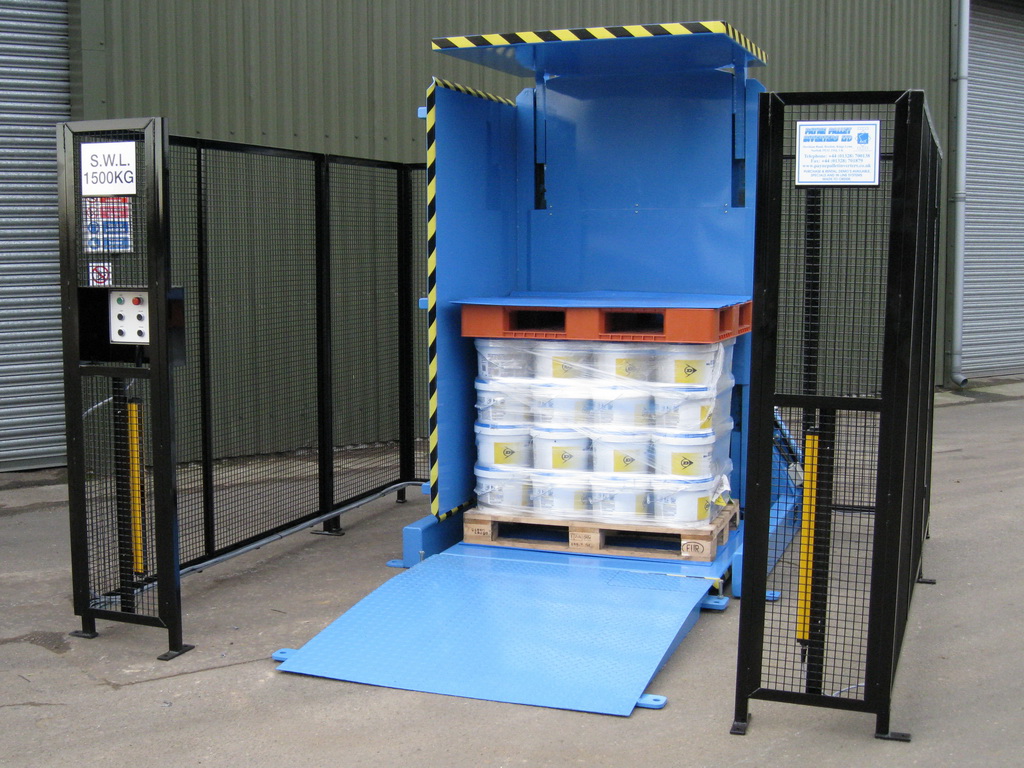
Building Your Business Case for Investment
I've helped many clients walk through this exact calculation. It's about being methodical and looking at every angle. When I was running my own factory, every major purchase had to pass this test. Let's build a framework for this feasibility analysis, something a detail-oriented leader like Javier would appreciate.
You can break down the ROI calculation into two parts: the investment (costs) and the return (savings).
Part 1: The Initial Investment (I)
This is more than just the sticker price. A complete picture includes:
- Machine Cost: The purchase price of the pallet changer itself.
- Shipping and Installation: The cost to get the machine to your Turkish facility and have it professionally installed and commissioned.
- Training: The cost to train your operators and maintenance staff on proper use and safety procedures.
- Site Preparation: Any costs associated with preparing the floor space, like electrical connections or safety guarding.
Part 2: The Ongoing Return (R)
This is where the real value becomes clear. You need to quantify the savings per year.
| ROI Factor | How to Calculate Annual Savings | Example Calculation (Illustrative) |
|---|---|---|
| Direct Labor Savings | (Workers needed before - Workers needed after) x Avg. Hourly Wage x Hours per Day x Work Days per Year | (2 workers) x €10/hour x 4 hours/day x 250 days = €20,000 |
| Increased Throughput | (Pallets per hour after - Pallets per hour before) x Profit per Pallet x Hours of Operation | (30 - 2) pallets/hr x €5 profit/pallet x 1 hr/day x 250 days = €35,000 |
| Reduced Product Damage | (Avg. monthly damage cost before) - (Avg. monthly damage cost after) x 12 | (€1000 - €50) x 12 = €11,400 |
| Reduced Injury Costs | Savings from lower insurance premiums + Avoided costs of one major injury (use industry avg.) | €2,000 (premiums) + €5,000 (avoided cost) = €7,000 |
| Pallet Fleet Savings | (Cost of expensive pallet - Cost of cheap pallet) x Number of pallets swapped per year | (€25 - €8) x 2,000 pallets = €34,000 |
| Total Annual Return | Sum of all savings | €107,400 |
Simple Payback Period = Total Investment / Total Annual Return
If the total investment was, for example, €150,000, the payback period would be: €150,000 / €107,400 = 1.4 years.
This type of concrete analysis transforms the purchase from an expense into a strategic investment with a clear, predictable, and often rapid return. It's the language of business growth.
My Insights: Beyond the Machine - A Partnership for Growth
I want to share a quick story. A few years ago, I visited a client in Turkey who ran a successful food export business. He was facing a huge penalty because his wooden pallets were rejected by a customer in Germany due to ISPM 15 regulations. His team was working around the clock, manually moving thousands of jars of product from wooden pallets to hygienic plastic ones. They were exhausted, product was being broken, and the shipment was days behind schedule. He was losing money and damaging his reputation.
He bought a pallet inverter from us. But the story doesn't end there. We didn't just ship a machine. I personally spent time with his team, not just showing them how to operate it, but helping them redesign their entire outbound workflow around it. We identified the best location for it on the dock, helped them set up a "clean" and "dirty" pallet zone, and integrated its use into their daily work orders. Six months later, he called me. He said, "Vincent, this machine didn't just solve my pallet problem. It changed the rhythm of my warehouse. We are faster, safer, and we just landed a new contract because we can guarantee compliance and speed."
This is what I mean by a "TOTAL SOLUTION." A machine is a piece of steel. A solution is a partnership. As someone who started on the factory floor and built a business from the ground up, I know that success isn't just about having the right equipment. It's about having the right partners who share their knowledge and are invested in your growth. My goal with SHJLPACK isn't just to sell machinery. It is to share the expertise I gained over 25 years to help others like you avoid the painful lessons and achieve success faster. We provide the machine, but we also provide the knowledge, the support for installation and maintenance, and the strategic advice to help you meet your goals—whether it's reducing costs, improving safety, or advancing your digital transformation. Your success is our success.
Conclusion
Ultimately, pallet changers cut downtime by transforming a slow, risky manual task into a fast, automated process, boosting overall operational efficiency and profitability.





